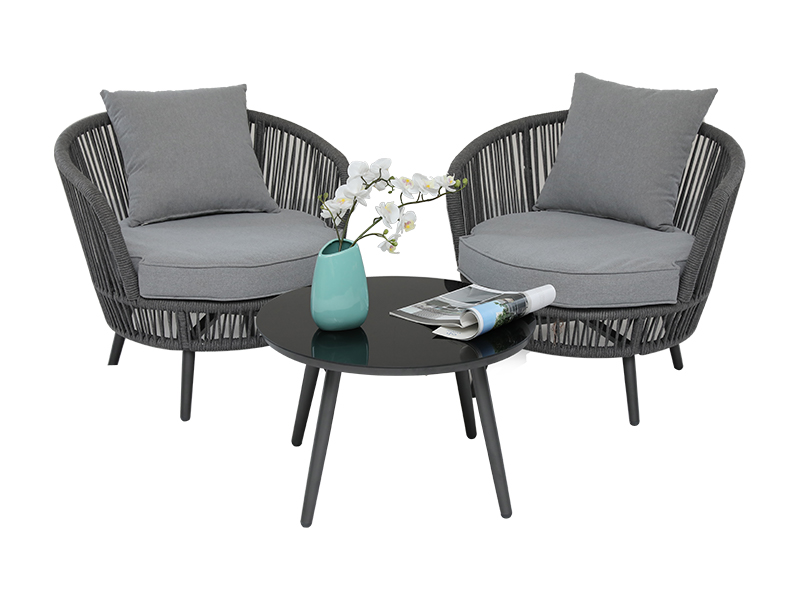Outdoor rope furniture, especially when made with high-quality materials, can perform well in high humidity and coastal areas with salty air, but its durability largely depends on the specific type of rope and materials used in construction. Here's how outdoor rope furniture can perform in these conditions:
Rope Material:
Polypropylene (PP) or Polyethylene (PE) Ropes: These synthetic materials are highly resistant to moisture, UV rays, and salty air, making them ideal for high-humidity environments and coastal areas. They don't absorb water and dry quickly, preventing mildew or mold growth.
Polyester Rope: Another excellent option for outdoor furniture, polyester ropes are resistant to UV damage, moisture, and saltwater corrosion. They're often used in marine environments, ensuring durability in coastal areas.
Nylon Rope: While strong, nylon can absorb water and become weaker when exposed to moisture over long periods. It’s less ideal for areas with constant humidity or salty air compared to polypropylene or polyester.
Frame Materials:
Aluminum Frames: Outdoor rope furniture with aluminum frames is a great choice for coastal areas because aluminum is lightweight, rust-resistant, and handles salty air well. This ensures the furniture remains sturdy and corrosion-free in high-humidity environments.
Stainless Steel Frames (Marine Grade 316): Higher-grade stainless steel (316) is specifically designed for marine and coastal environments, offering better resistance to saltwater corrosion compared to standard stainless steel (304).
Powder-Coated Steel Frames: While more affordable, powder-coated steel can corrode over time in salty air if the coating wears down. It's best to check the quality of the coating for better longevity.

Moisture and Salt Air Impact:
Mold and Mildew Resistance: High-quality outdoor rope materials like polypropylene and polyethylene are resistant to mold and mildew, which are common in humid conditions. Regular cleaning can help prevent any buildup.
UV Resistance: Constant exposure to sunlight, especially in coastal regions, can weaken materials. Most high-quality ropes are UV-treated to withstand sun damage, maintaining their strength and appearance.
Maintenance Tips for Coastal Areas:
Regular Cleaning: Salt can accumulate on the rope and frame over time, so rinsing the furniture with fresh water regularly helps prevent salt buildup and corrosion.
Storage or Covering: During prolonged periods of non-use, especially in rainy or stormy seasons, it's a good idea to store or cover outdoor rope furniture to protect it from excessive moisture and harsh conditions.
Inspecting Metal Components: Even if made from corrosion-resistant metals like aluminum or stainless steel, regularly check for signs of rust or wear, especially around joints and welds.
Outdoor rope furniture made with synthetic ropes like polypropylene, polyethylene, or polyester, paired with corrosion-resistant frames such as aluminum or marine-grade stainless steel, can perform very well in high-humidity or coastal areas. With proper maintenance, such furniture can withstand the challenges posed by salty air and humid environments, offering both durability and aesthetic appeal.